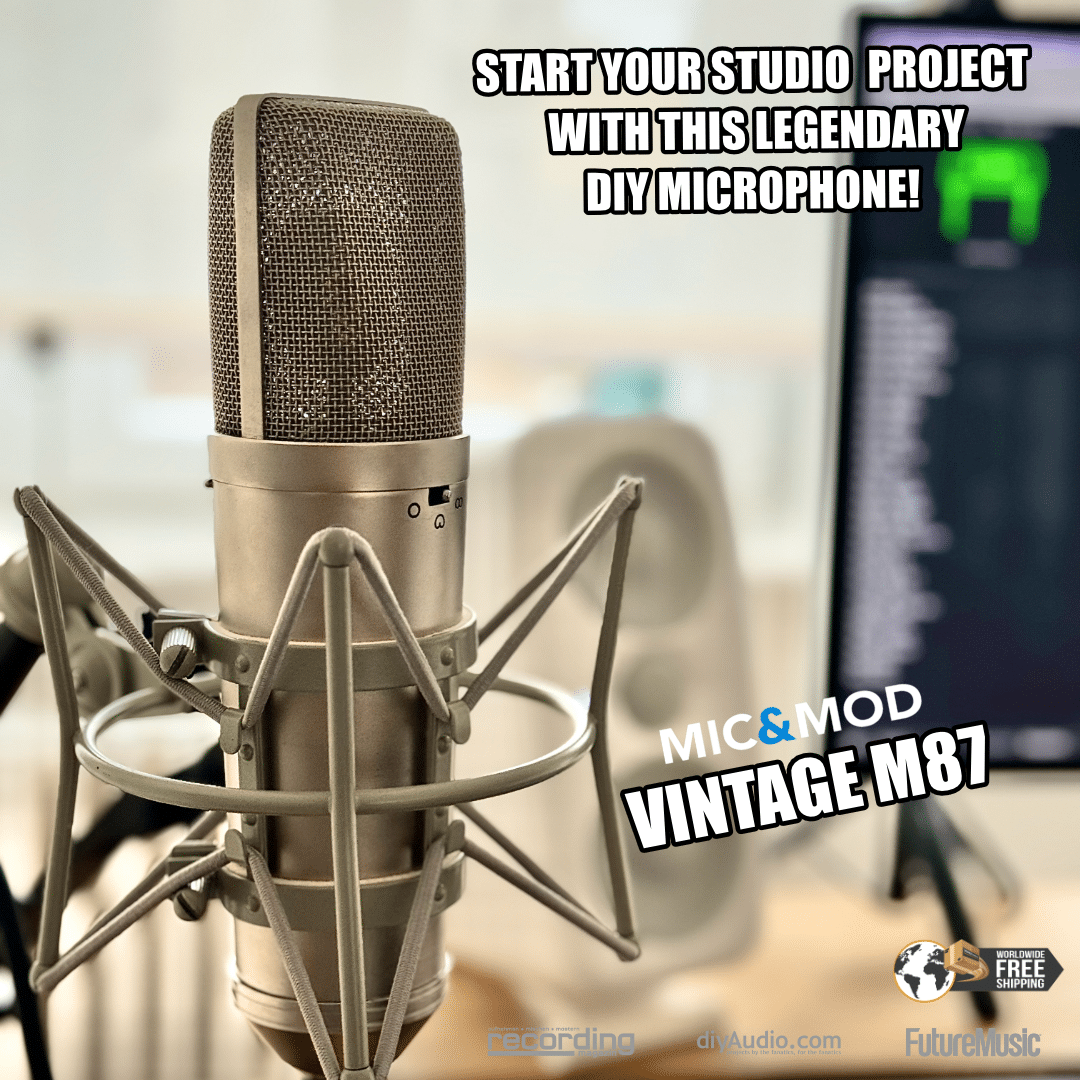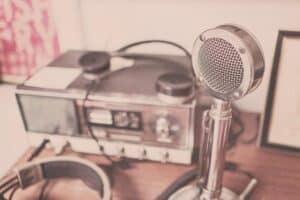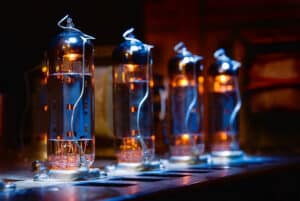You have a home studio or a professional recording studio but you don’t know how to optimize the acoustics? Here is an article that is made to help you understand the interest of measuring the acoustics of your room in the best conditions. You will also find out which microphone to choose.
🎚 Measuring the acoustics of your recording studio
How to measure the acoustics of your recording studio?
You have installed your recording studio? And you would like to achieve a perfect sound quality? Unfortunately, having a good studio microphone and quality monitoring speakers is not enough. In order to get closer to perfection, be sure to treat your room acoustically. Start by measuring the acoustics of your studio.
What is the purpose of acoustic measurement of a recording room? How to position the measurement microphone correctly? Which measurement microphone should I choose? Find the answers to your questions in this guide.
📈 Why is it important to measure the acoustics of your studio?
To help you understand the importance of acoustic measurement, a little reminder is in order. Let’s see how the circulation of sound in a room works.
First, note that sound from a source (voice or musical instrument) travels in all directions in a room. Some sound, called direct sound, travels in a straight line to the microphone. The rest of the sound resonates in the studio randomly. In the jargon, this is called indirect sound.
The direct sound doesn’t bounce around the room. And its frequency remains balanced. The microphone thus captures a precise sound.
Indirect sound, on the other hand, bounces between the surfaces of the room. This can lead to a change in sound depending on the size and shape of your studio. Among other things, the sound may become distorted. This makes the music unclear and the sound environment uncomfortable.

To prevent this from happening, a treatment before the recording is necessary: an acoustic treatment. This treatment will allow you to reduce the sound nuisance (the indirect sound) and to isolate the direct sound. As a result, you will have a better recording quality.
And to treat your room, you should start with the acoustic measurement of your studio. This practice allows you to detect acoustic problems in your recording studio. And identifying the anomalies will help you optimize the quality of sound reproduction in the listening area.
🔧 What tools should be used to measure the acoustics of a studio?
To do this, you can use the clap test. Walk around your studio and clap your hands loudly. Then listen to the room’s response. Note, however, that this empirical method is not very accurate.
To be most efficient and obtain accurate results, you will need a specific microphone. But not just any microphone, use a microphone that has a very flat frequency response, in this case a measuring microphone.
If you want to be close to perfection, you can also use a measurement software. This tool will help you analyze the test results. Some brands sell microphones with very reliable software, and we were able to test the Sonarworks SoundID with their Sonarworks SoundID Ref Measurement Microphone, Other brands such as IK Multimedia also offer combos with the IK Multimedia MEMS which you can couple with the software IK Multimedia ARC System 3

Once the acoustic microphone measurement is complete, you can then bring in the items your room will need to optimize the sound. These may include the following:
- Bass traps to trap low frequencies
- Acoustic panels to reduce mid to high frequencies
- Diffusers to regulate the acoustics of a large recording room
🤔 Generalities of the acoustic measurement microphone
👉 Physical characteristics of the measuring microphone
The microphones are based on a very simple physical principle: capacitive technology.
The capacitance of a microphone is inversely proportional to the distance between the backplate (a rigid plate) and the diaphragm (a thin sheet of metal under tension). When exposed to sound pressure, the diaphragm deforms and moves towards or away from the back plate, thus changing the capacitance of the device. These changes in capacitance are converted into voltage amplitude. Most measuring microphones are based on this principle.

👉 Measuring microphone diaphragm
The measuring microphones are available in 1, ½, ¼ and 1/8 inch diameters. The larger the diaphragm, the less rigid it is and the easier it is to detect small changes in sound pressure. However, the diameter of the diaphragm limits the detection of frequencies with wavelengths in the same or longer range than the diaphragm.

👉 Sensitivity of the measuring microphone

The sensitivity corresponds to the voltage generated by the microphones under a defined sound pressure. It is defined in V/Pa and depends on the frequency. The sound pressure of one Pascal corresponds to a level of 94 dB SPL. Thus, most microphone calibrators achieve a sound pressure level of 94 dB or 1 Pa.
Sensitivity is frequency dependent, so the frequency response of the microphone is its sensitivity over the entire frequency range. This value is usually expressed in decibels.
👉 Dynamic range of an acoustic measurement microphone

The dynamic range of the measuring microphones (e.g. 16 dBA – 143 dB) corresponds to the range over which the microphone behaves as a perfectly linear sensor.
The first value corresponds to the background noise of the sensor. Condenser microphones and their preamplifiers have a background noise that comes, in particular, from the constraints of the electronics and Brownian displacements.
This number indicates the sound pressure level whose generated voltage is identical to the sensor’s background noise. The noise is measured in a one-third octave band, A-weighted in the range of human hearing (between the 22.4 Hz and 22.4 kHz band), if no other information is available. The second value indicates the maximum sound pressure level measured with a total harmonic distortion of less than 3%.
👉 Sound field of the measuring microphone
The size and shape of measuring microphones influence the sound pressure. This influence, which is dependent on the type of sound field, is considered in the design of each microphone, and their responses are optimized to compensate for these effects. This ensures that the microphone response is always flat, depending on the sound field identified.
Measurement microphones are divided into three main categories, each of which is optimized for one of the three main types of sound field – so it is important to select the microphone best suited to the defined sound field.
Open field
Free-field microphones are usually used to measure, for example, speaker levels or outdoor noise.
For open field measurements, without reverberation, the measurements should be taken outdoors, on top of a mast or in an anechoic chamber.
In an anechoic chamber, the ceiling, floor and all walls are covered with highly absorbent materials that eliminate any reverberation. Thus, the sound pressure level – regardless of the direction of the noise emitted by the source – can be measured without any reverberation.
Diffuse field
In contrast to the anechoic chamber, the reverberation chamber is made of the hardest and most reflective surfaces possible, without any coating. This process creates a diffuse field, since all the sound waves come simultaneously from all directions, with the same frequency and the same level.
Sound fields close to the diffuse field can be obtained in buildings with rough walls and when many sound sources or noises are generated simultaneously, as for example in churches.
If you are unsure of the surrounding sound field, it is best to consider it as diffuse to minimize measurement errors. Diffuse-field microphones are usually used to measure noise inside vehicles or in building acoustics.
Pressure field
A pressure field is a sound pressure that has the same intensity and frequency regardless of its position in the field. A sound field very similar to the pressure field can be obtained in small spaces (small compared to the wavelength) such as artificial ears.
Pressure field microphones are usually used for small closed couplers, in wind tunnels or for flush measurements.


👉 How do you position the measuring microphone?
The way you use the microphone is also important for good results. To measure the acoustics of your recording studio, here are some tips on how to position the microphone correctly:

- Place your microphone at head level
- Install it at equal distance from your 2 monotoring speakers
- Position it vertically towards the ceiling to measure the response throughout the room.
What are the best measurement microphones ❓
Now you know that an untreated room can be detrimental to your recordings. And that it is essential to purchase a microphone for the acoustic treatment of your room. You also know all about the installation of the device. The only question is which measuring microphone to use.
The most important factor in choosing a microphone is its neutrality.
The more neutral it is, the better! And don’t worry, the microphones needed to measure a room are very accessible, you can get them for around 30 euros and a little over 100 euros with software packs included.
For example, the ECM8000 microphone from Behringer at 33 euros at Thomann.
Although its response curve indicates a failure in the high frequencies, the rest of its curve is linear enough to detect acoustic problems in a room.
Of course, there are others much more expensive, easily exceeding 1,000 euros, which are much more accurate, and therefore, do a better job. However, their acquisition is of real interest in taking measurements of speakers or microphones, requiring extreme precision.


Usually, the microphones used for room measurement are omnidirectional electret microphones.
Unfortunately, no microphone is perfect, and each microphone is unique, which means that two microphones of the same make, model and even series are different.
Also, to remedy this problem for maximum accuracy, it is recommended to get a calibrated microphone.
Calibration of a microphone consists of recording its frequency response and establishing a curve to identify its weak points.
This response curve is presented in the form of a graph which is then used as a reference to counterbalance its defects with a measurement software.
A calibrated microphone, when purchased, is supplied with a file or printed chart for reference.
So, the second argument for choosing a microphone apart from its price is to choose a calibrated microphone supplied with the calibration file or chart rather than an uncalibrated one.
The problem is that the industry doesn’t provide a calibration file for each microphone, but provides a reference curve representing the average of the series of the same model.
To have a microphone really calibrated, there is only one way, you must have it calibrated by a professional who will do it in laboratory conditions.
Our Selection of the Best Microphones for acoustic measurement ❤️
Here is our TOP 3 of the most interesting measuring microphones on the market:
🎤 Behringer ECM 8000, the most popular measuring microphone
The ECM 8000 from Berihnger is probably the most popular measuring microphone among sound engineers. This measuring condenser microphone has an outstanding performance and provides high precision.
Its frequency response is very flat. This one is between 15 and 20 000 Hz. As for accessories, the ECM 80000 comes with a swivel stand and a case.

🎤 The Beyerdynamic MM1 microphone, the best value for money
Another solution to help you measure the acoustics of your room: the MM1 from Beyerdynamic. This condenser microphone is specially designed to measure sound levels and frequency curves.
This omnidirectional microphone has a frequency response between 20 and 20,000 Hz. It requires phantom power from 12 to 48 V to operate. It comes with a case, a clip and a measurement chart.
And to top it all off, its price/performance ratio is very attractive.
🎤 Superlux ECM999 a reliable and accurate measuring microphone
To measure the acoustics of your recording room, you can also choose the ECM999 from Superlux.
It is an inexpensive microphone, but it does its job well. Its frequency response varies from 20 Hz to 19 000 Hz. It is ideal for acoustic measurement in home studio.










